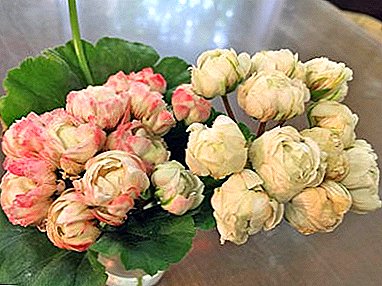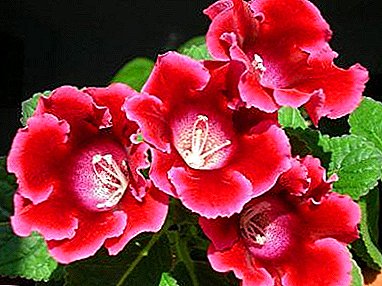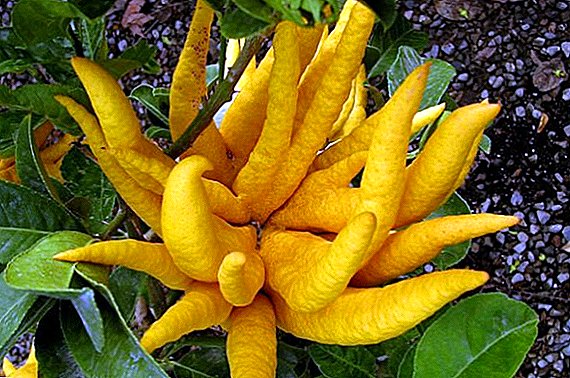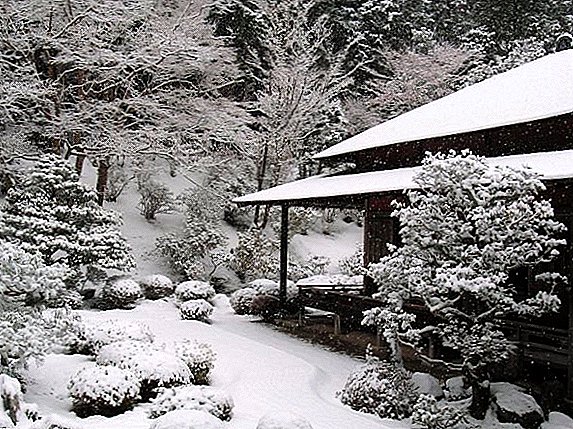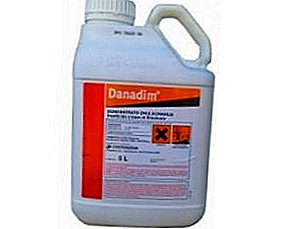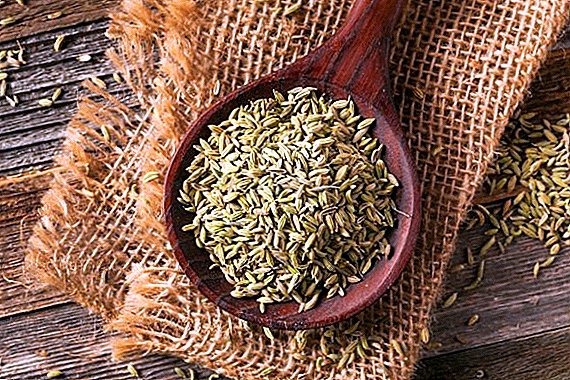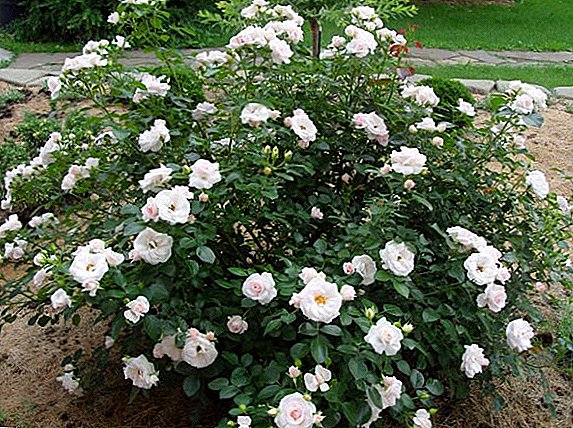 The variety of roses "Aspirin Rose" is considered relatively young. It was launched in honor of the 100th anniversary of aspirin in Germany, in 1997. Despite the fact that aspirin as a medicine has long been banned in a number of countries, the rose of the same name is becoming increasingly popular and is actively used in landscape design.
The variety of roses "Aspirin Rose" is considered relatively young. It was launched in honor of the 100th anniversary of aspirin in Germany, in 1997. Despite the fact that aspirin as a medicine has long been banned in a number of countries, the rose of the same name is becoming increasingly popular and is actively used in landscape design.
Biological features
The demand for roses and their recognition depends on the biological characteristics, which are characterized by certain indicators, such as the height of the bush, the size and color of the buds, the flowering period, the aroma, as well as the resistance of the variety to diseases and temperature extremes.
Bush height
Variety "Aspirin Rose" refers to a group of abundantly blooming, but it is often defined as climbing miniature and ground-covering roses. Such a variety can be called universal, it is excellent for planting in a small garden, as well as for creating large-scale compositions in landscape design. Bushes are branched, but compact enough, reach a height of 60 to 80 cm, have strong shoots and luxurious light green, glossy foliage. The width of the bush is about 80 cm.
Read also about such charming varieties of roses as: "Graham Thomas", "Double Delight", "Pierre de Ronsard", "Sophia Loren", "Falstaff", "Pink Intuition", "Blue Perfume" and "William Shakespeare".
Buds
The buds are quite large, reaching 8 cm in diameter. At the beginning of flowering, the middle of the white bud has a pinkish tint, it becomes especially saturated in cool time. Gradually blooming, the buds become pure radiant white color. On one brush can concentrate from 10 to 15 buds, so the whole bush soon after the start of flowering, is covered with delicate white flowers.
Did you know? One of the most famous rose products is rose oil. Useful in cosmetology, the product is made from rose buds of certain varieties. For the first time such oil was made in Persia, and at the moment Bulgaria is one of the largest producing countries.One bud has at least 50 petals, differing terry structure. The peculiarity of this variety is that the petals gradually peel off from the buds, even before they change color or wither, therefore the bush always looks good, does not have dark brown or brown spots in the form of dried buds.

Bloom
Flowering "Aspirin Rose" is quite abundant and simultaneous, fallen buds are continuously replaced by new spectacular flowers. Variety refers to the re-flowering plants, the duration of flowering is about 5 months - from the beginning of summer, until the first frost in October.
Aroma
Despite the beauty of the Aspirin Rose buds, their smell is subtle, fairly light and unobtrusive, but at the same time pleasant.
Learn how to care for roses in a pot, how to grow a rose from a bouquet, and how to choose shelters for the winter.
Winter hardiness and disease resistance
The rose of this variety belongs to the fifth zone of winter hardiness, that is, it can withstand temperatures up to -29 ° C, but, despite such characteristics, it is recommended to cover bushes for the winter for reinsurance. The variety has a high resistance to diseases that most often affect roses. Among them are black spot and powdery mildew. The rose can be affected by these diseases only in rare cases, if the growing conditions were not met, or the whole period of growth of the rose was accompanied by unfavorable natural conditions. 
Use in landscape design
"Aspirin Rose" is well suited to design any corner of the garden. Often the plants are planted in groups, so in the period of development of the bushes, they create a dense luxurious green carpet, which eventually becomes covered with abundant white flowering. This rose is considered indispensable for the design of the landscape of garden plots, while the plant can be used in any preferred style of decoration.
You will be interested to know about which classes and groups roses can be divided into, what mistakes gardeners make most often, how to fertilize roses in spring, summer and autumn, and how to distinguish a rose from a rosehip.Considering that the rose has rather long shoots that are covered with a large number of brushes and inflorescences, the bushes are planted both in flowerbeds and rocky plots of land, decorate the slopes or send shoots to supports. Effectively will look "Aspirin Rose" on a green lawn. The rose is well combined with other plants in landscape design, while creating original multi-level gardens.

Growing conditions
"Aspirin Rose" refers to the most unpretentious varieties, which makes it very popular for use in landscape design in all corners of the planet. There are only a few recommendations to grow the most healthy and abundantly flowering plant. For planting rose bushes of the considered variety, it is recommended to choose sufficiently sunny areas. However, it is best if direct sunlight hits the bushes only in the morning and evening.
If the rose is under the open burning sun all day, its petals may be covered with ugly brown burn spots. The area should be well ventilated, it is not recommended to plant bushes in the lowlands, where there is stagnation of cold air. In this case, roses will often hurt, which will affect their normal growth and development. The preferred soil for planting this variety is black soil, but no worse than a rose will grow on loam.  It is recommended that groundwater does not come close to the surface, they should be below one meter. The acidity of the soil is also important, the plant prefers slightly acidic soils with a pH of 6.0-6, 5. If the acidity of the soil is reduced, this can be corrected by adding manure or peat to the soil. Excessive acidity is also undesirable, so it is recommended to liming the soil or powder it with ashes.
It is recommended that groundwater does not come close to the surface, they should be below one meter. The acidity of the soil is also important, the plant prefers slightly acidic soils with a pH of 6.0-6, 5. If the acidity of the soil is reduced, this can be corrected by adding manure or peat to the soil. Excessive acidity is also undesirable, so it is recommended to liming the soil or powder it with ashes.
Did you know? The oldest rose in the world is the bush that grows in Germany at one of the cathedrals of the city of Hildesheim. He is already 1000 years old, and the height of the rose has almost reached the roof of the building, while the plant still continues to bloom.
How to plant a rose on the plot
The site for planting roses "Aspirin Rose" is recommended to choose in accordance with the recommendations for lighting and windiness in the area and pick up the soil with the necessary characteristics. Favorable place for disembarking is the south-eastern or south-western side of the site. It is also better to choose a place on a hill, so that in the spring period thawed snow would move away from the bush faster. The landing time in regions characterized by warm winters is autumn, and in regions with frosty winters spring.
Familiarize yourself with the major diseases of roses, including powdery mildew.If the plant will be planted in the fall, the shoots are shortened by about 10 cm before planting, but the main pruning should be done in the spring. If planting will be done in spring, the shoots are pruned more, leaving only 2-3 buds in strong plants, and in weak plants - 1-2 buds each. It is very important to prepare a place before planting the plant in open ground.
Considering the fact that ground cover roses have quite flexible shoots that reach the ground, intertwine and create a dense carpet, it is rather difficult to care for the plants, especially with regard to the removal of weeds. In this case, it is recommended to completely clean the area from large weeds and weed the soil well. The ideal option would be to treat the site "Roundup" and loosen the soil.
Video: correct planting roses
This is necessary in order to get rid of the stems and roots of weeds in an immediate order. So that over time the weeds do not appear again, the soil between the planted bushes is mulched using bark, sawdust, decorative chips, black film. Mulch must be filled with a thickness of not less than 4 cm to prevent the germination of weeds and complicate their existence.
The phased planting process looks like this:
1. To begin planting bushes, you must first dig holes 50 cm deep and 50 cm in diameter. If you plan a mass landing, you can dig one solid trench of the same depth as the pit.
Important! Make sure to 1 square. m was located no more than one plant, as in the process of growth it grows well, and it will be crowded if you leave little space between the bushes.2. The bottom of the pit is filled with drainage in order to avoid stagnant water. In this quality, you can use crushed stone or gravel. The layer should be about 10 cm. Mineral fertilizers, represented by rotted manure or compost, about 10 cm thick, are applied above the drainage.
 3. Next in the pit fall asleep garden soil in a height of 10 cm.
3. Next in the pit fall asleep garden soil in a height of 10 cm.4. Before planting roses for 15 minutes, lower the roots of the plant in a solution of clay soil. To do this, use 10 liters of water and 2 liters of soil.
In your flower garden you can grow different types of roses - Floribunda, Canadian, tea, English, bush, wrinkled and ground cover.5. Remove the plant from the liquid and place it on a hill of garden soil in such a way that the roots of the rose are evenly distributed and, as it were, “cover” the hill with them.
 6. Make sure that when you fall asleep with the ground, the root neck of the plant is 3 cm below the total ground level. This is necessary to stimulate the growth of additional stems. As soil is poured in, tamp it down a little.
6. Make sure that when you fall asleep with the ground, the root neck of the plant is 3 cm below the total ground level. This is necessary to stimulate the growth of additional stems. As soil is poured in, tamp it down a little.  7. After planting, the plants are watered under the root, if the earth has settled a little in the place of irrigation, it is necessary to pour more.
7. After planting, the plants are watered under the root, if the earth has settled a little in the place of irrigation, it is necessary to pour more.Care features
In order for the plant to grow well and bloom abundantly, it is necessary not only to choose the right place for planting, but also to take care of it regularly, so consider the main nuances of caring for the Aspirin Rose variety. First of all, it is necessary to understand the frequency and abundance of watering, since this factor is an integral part of the normal existence of rose bushes.
Watering roses is better early in the morning or late in the evening, when direct sunlight does not fall on the bushes. The frequency of watering should be regulated independently; watering is necessary when the top layer of soil under the bushes has dried up by 4 cm. Roses bloom profusely only if they are regularly fed. During the growing season, fertilizing is recommended to be carried out at least 4 times:
- The 1st feeding is carried out in early spring when the first leaves are formed on the bush. To do this, use "Tsitovit", "Agricola" or any other means for flowering plants;
Important! Make sure that the proportion is observed in the feed: 1 part nitrogen, 1 part potassium, and 2 parts phosphorus.
- 2nd feeding is carried out a month after the first. The same dressings are used as in the first case;
- The 3rd dressing is recommended during the period when the first wave of flowering ends. Thus, there is a stimulation of repeated flowering. It is necessary to use the same means as in the 1st and 2nd cases;
- The 4th dressing is recommended in the autumn, when the plant has completely faded and is preparing for a rest period. In this case, you must use any potash fertilizer for better aging of the shoots.
 Cut the ground cover roses should be 2 times a year - in spring and autumn. In the spring, pruning of the shoots is made, which in the winter period were broken or frozen, they are cut to the root. There are several types of spring pruning:
Cut the ground cover roses should be 2 times a year - in spring and autumn. In the spring, pruning of the shoots is made, which in the winter period were broken or frozen, they are cut to the root. There are several types of spring pruning:- short It is used for weak or old bushes, in this case, the shoots are cut so that they are left from 2 to 4 buds;
- moderate. Used to stimulate early flowering and ensure maximum decoration. In this case, the shoots are pruned to the 5-7th buds.
 There is no need to hurry with the construction of the shelter, the roses absolutely perfectly tolerate frost down to -10 degrees, moreover, this temperature helps the plant to prepare for wintering. When frosts will be daily, without sudden drops in positive and negative temperatures, it is necessary to start sheltering roses. First of all, this procedure involves hilling bushes with earth.
There is no need to hurry with the construction of the shelter, the roses absolutely perfectly tolerate frost down to -10 degrees, moreover, this temperature helps the plant to prepare for wintering. When frosts will be daily, without sudden drops in positive and negative temperatures, it is necessary to start sheltering roses. First of all, this procedure involves hilling bushes with earth.Important! It is not recommended to replace the ground with sand, peat or sawdust - this will reflect badly on the condition of the plant.After hilling, the branches are covered with spruce branches and wire frames are installed. A plastic film is stretched over the frames so that the side airways remain. Airing the bushes in the spring is necessary, since March. In April, the skeleton is completely removed so as not to provoke premature swelling of the kidneys.
Make a fragrant wine from rose petals, dry them, and find out how useful roses are for human health.Thus, "Aspirin Rose" - a unique beautiful variety of roses that are unpretentious to the conditions of growth and undemanding to care. In order to preserve the peculiarity of the bushes to bloom again, it is necessary to follow the recommendations and follow the mode of dressing.


